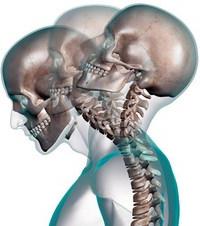Fractures of the skull segments are divided into basal and convexital. In severe injuries, cracks can form in the arch area. They can spread to the ground.
There is a certain classification of lesions depending on the nature. So, there are cracks, perforated (fractures with defects), comminuted fractures.
TBI may be accompanied by divergence of sutures. This lesion essentially does not apply to fractures. Arch cracks do not require, as a rule, special treatment. Over the course of several weeks, the cracks are filled first with connective and then with bone tissue.
Indications for surgery for comminuted lesions occur in the presence of deformation with displacement of fragments into the cavity (a pressed fracture of the skull).
In the case when, under the action of intracranial pressure, the brain begins to prolapse (lower and protrude) into the wound, it becomes impossible to sew up the hard shell. In such situations, it is more advisable to carry out plastic sheath. For this, a wide fascia of the thigh, periosteal aponeurotic flap or artificial substitutes are used. Bone fragments are removed. In order to prevent liquorrhea, soft tissues are sutured in layers.
A fracture of the base of the skull, as a rule, is accompanied by bruises of the basal brain and stem sections. There are also signs of nerve damage. The fracture of the base of the skull has the form of a crack, often passing through the paranasal sinuses, the pyramid of the temporal bone segment, the Turkish saddle. With simultaneous damage to the mucosa of the sinuses and membrane, there is a high probability of infection of the brain. This is due to the emerging communication between the airborne accessory areas and cerebrospinal fluid spaces. These lesions are characterized as penetrating.

A fracture of the base of the skull is manifested by cerebral symptoms. The condition also includes manifestations of stem disorders, nerve damage, cerebrospinal fluid and bleeding from the ears, mouth, nose, nasopharynx. Bleeding from the ear canal is observed when the pyramid of the temporal bone segment is damaged in combination with damage to the tympanic membrane; from the nose - with damage to the ethmoid bone; from the nasopharynx and mouth - with damage to the wedge-shaped element.
Liquorrhea with cerebrospinal fluid content indicates that, in addition to a fracture of the base of the skull, the meninges are damaged. In this case, bleeding from the ears and nose becomes a diagnostic sign if it occurs in combination with neurological manifestations. Minor bleeding in intensity stops quite easily. They, as a rule, do not indicate a fracture. Heavy and prolonged bleeding, on the contrary, usually indicates the presence of a serious injury.
Fracture of the base of the skull. Effects
The presence of gross damage to the basal sections immediately after an injury or for a short time can lead to death. Some patients may be in serious condition for a sufficiently long period. In this case, a fracture of the base of the skull is accompanied by anxiety, anxiety, and disturbance of the respiratory apparatus and heart. The most dangerous complication is purulent meningitis.